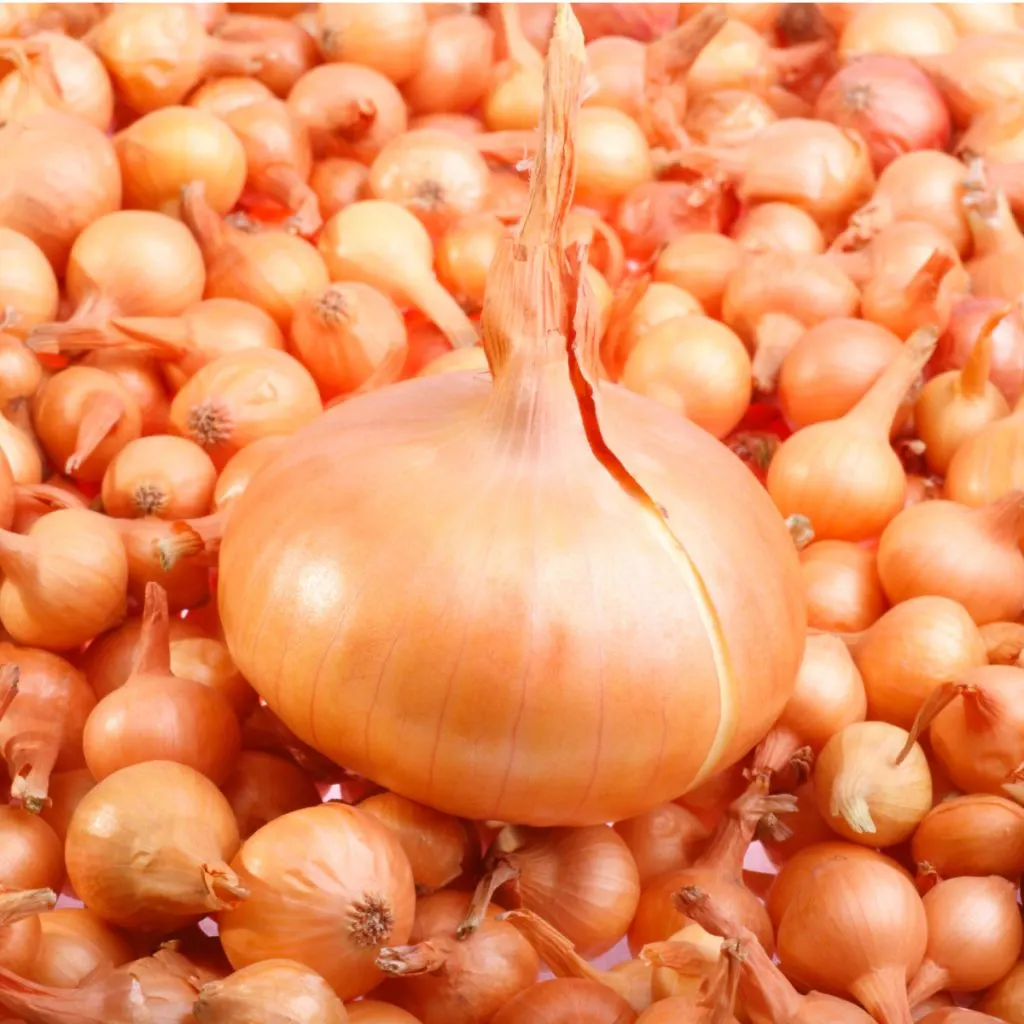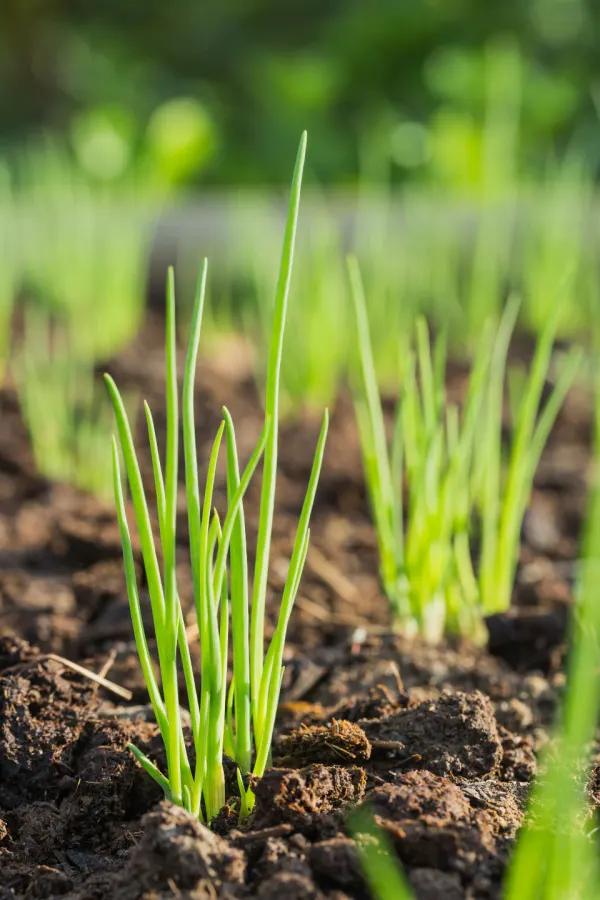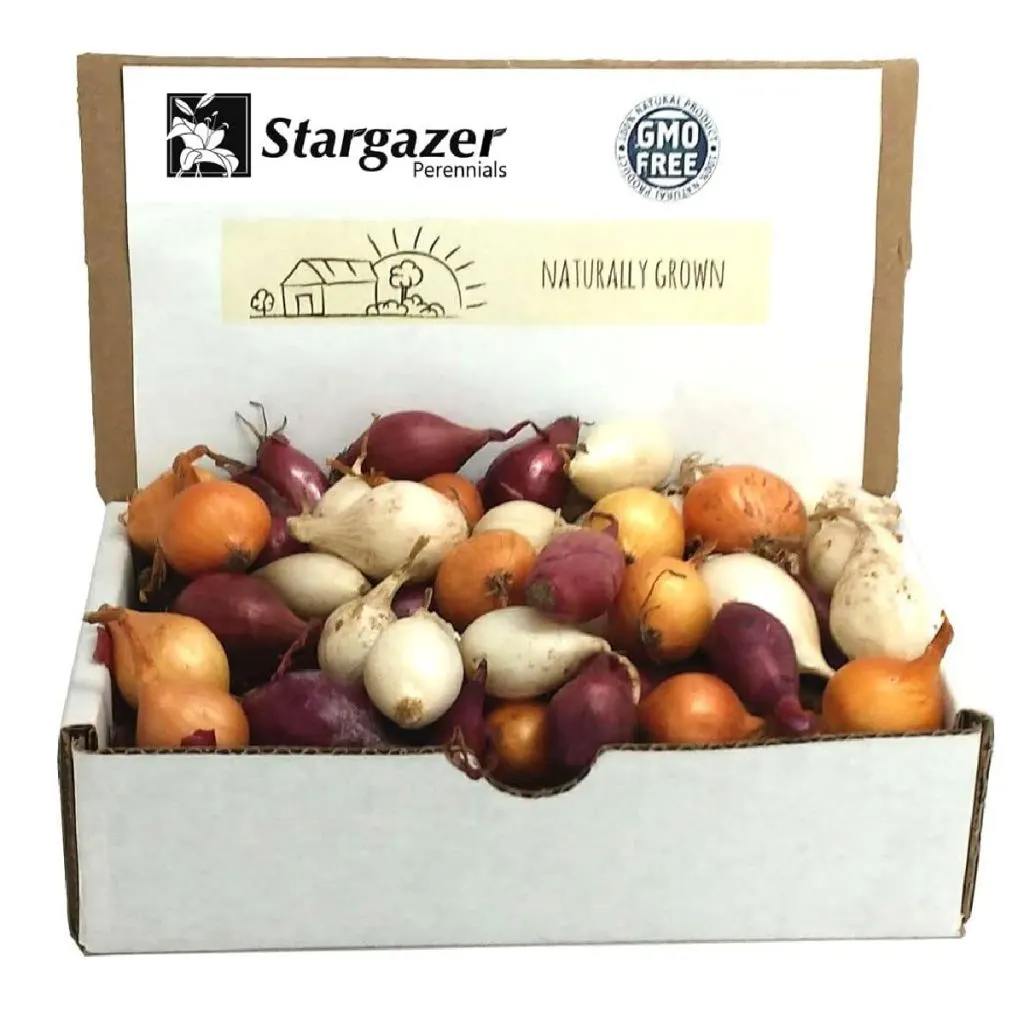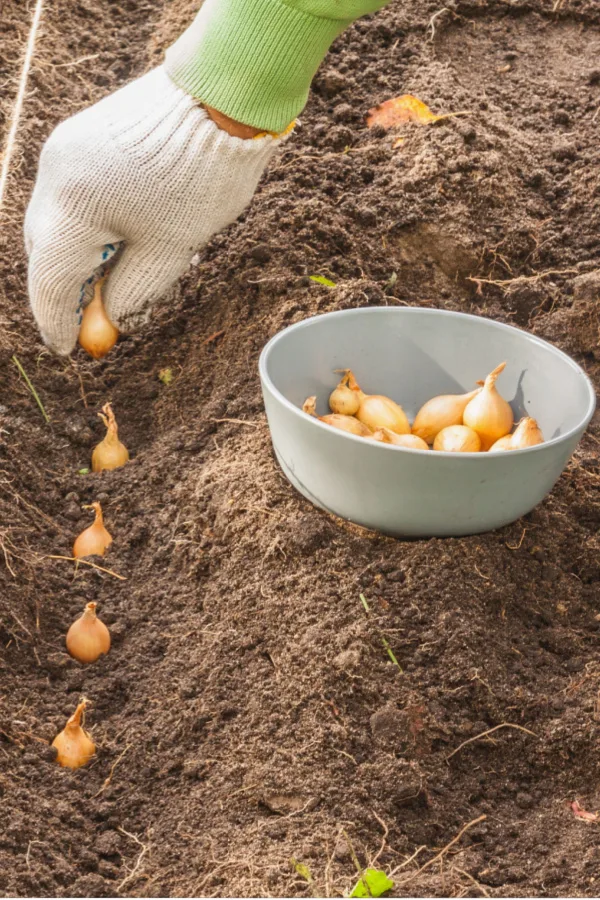Looking to plant onions this year and not sure if you should plant onion seeds or sets?
The question certainly sparks quite the debate. And not just among those new to gardening, but seasoned gardeners as well. To be exact, onions can actually grow in three different ways – by planting seeds directly in the soil, by growing seeds into transplants and then planting, or by placing older but immature onion bulbs known as onion sets in the ground.
So which of these three growing methods are the best? The simple truth is, all three methods have distinct advantages and disadvantages when it comes to growing onions. And the answer to which is best is determined by exactly where you happen to live!

To know what the best planting method is for you, it all comes down to answering three important onion growing questions: What is your specific climate? What type of onions grow well in your area? And, how many hours of daylight will your onion crop receive as they grow?
With those questions in mind, let’s first take a look at understanding how onions grow – and then how to select the best type of onion to grow exactly where you live!
The Best Way To Plant Onions – Onion Seeds Or Onion Sets?
An Onion’s Lifecycle
There are two important things to know about onions before selecting how you want to plant them. The first is knowing how an onion grows and develops. The second is understanding that certain onions grow better or worse in different climates.
First, let’s cover an onion’s growing cycle. Onions are a biennial crop. This means they grow, mature and finally produce seed over a two year period – and not in a single growing season.
During the first year, an onion grows from a tiny seed into a bulb. If planted early enough from seed, the bulbs will grow large enough to be harvested that year as smaller but very tender onions. But if the bulb stays in the ground over the winter, it will continue to grow in year two as the soil warms.

It is in this second year that the bulb matures to complete its growth cycle. When this happens, it sends up a “bloom” and sets seed on the head of the flower. Thus completing its two year growing cycle – and producing seeds that can grow more onions. Second year seed planted onions are usually much larger in size.
Selecting The Right Onion For Your Climate – The Best Way To Plant Onions
Onion varieties fall into three distinct categories, short day onions, long day onions, and day-neutral onions. Each of these categories are based upon the climate, sunlight, and the days the onion will need to mature.
Short Day Onions
Short day onions are a warmer-climate onion. Because of this, short-day onions mainly grow in the south and southwest. Short day onions need around ten to twelve hours of average daylight to begin forming their bulbs.
Although short day onion varieties can grow in northern climates, the bulbs will never reach full maturity. Not in size, or in their flavor profile. So if you live in the north and have a cooler climate, avoid planting short day onions.
Long Day Onions
Long day onions mainly grow in northern climates. You can plant these onions in the spring or fall from seeds, seedlings or sets. Long day onions need to get between 13 and 16 hours of daylight to begin maturing.
Long day onions cannot grow in southern areas because the daylight never extends long enough to form or mature bulbs from seed, sets or seedlings. So if you live in the south or warmer climates, avoid long day onions.

Day Neutral Onions
Finally – an onion almost everyone can grow! Day-neutral onions are a bit different than short and long day onions in that they will form bulbs no matter the daily hours of sunlight they receive. These onions can grow anywhere except the extreme south, where it gets too hot for them to mature.
Day-neutral onions need to go in the ground in warm climates in the fall, and early spring in the north. Now that you know what type of onions to plant – let’s cover which is better for planting – onion seeds, sets or even onion transplants!
Onion Sets, Onion Seeds Or Onion Seedlings? The Best Way To Plant Onions
Growing Onion Sets
Onion sets are small onions that grow from seed or seedlings from the previous year. Instead of allowing them to mature, they harvest the small onions as an immature bulb. They are then kept dormant until the following spring and planted as a bulb to grow again. See: How To Plant Fall Onions
Once planted, they mature into full-grown onions during their second year of growing. The advantage with onion sets is they already have a head start on their growth.
Not only can you harvest them sooner, it can also lead to harvesting larger bulbs. They are by far the easiest way to grow onions for gardeners. They also happen to be the best way to grow larger onions. Affiliate Link: Mixed Red, White and Yellow Onion Sets 8 oz | Naturally Grown Non-GMO Bulbs

So what is the drawback for planting onion sets? It really comes down to selection. In the world of onions, there are hundreds of varieties available. And each have their own growing style and flavor profile. But with sets, you can usually only find them in just the common white, yellow and purple varieties.
If you love red, white or yellow onions, sets are the way to go! But if variety is what you are looking for, growing from seed or seedlings may be the better choice.
Onion Seeds And Seedlings
The advantage of growing from onion seed is that you open yourself up to a wide range of varieties. Although you can direct seed into the ground in warmer climates, onion seeds take a long time to grow and mature.
That means for warmer climates, they need to go in the ground in the fall or late winter. For northern climates, start seeds indoors 10 weeks prior to moving outside to transplant. In essence, this is the process of planting onion transplants or seedlings. One thing is for sure, it’s a much better way to go when planting from seed.
One of the biggest disadvantages of planting seed is how long it takes to mature. But by growing seedling indoors or in trays, you allow your onions to get a head start. In addition, it makes weeding and bed care much easier. Affiliate Link: Organo Republic 8 Heirloom Onion Seeds Variety Pack.

Planting seeds directly outdoors in a large garden space can make it difficult to tell if what is sprouting is an onion, or a weed. But by growing transplants separately out of the garden, that chore is much easier!
Spring Planting vs. Fall Planting
One final subject that can play an important role in your onion harvest is the topic of when to plant.
Short Day onions (planted in southern and warmer locations) should always go into the ground in the fall. They can grow in the warmer winter and develop and be ready for late spring harvesting.
Long Day and Day Neutral onions on the other hand can go in the ground in the fall or spring. It is important to understand that a single season (spring to fall) of growing will produce smaller bulbs overall for harvesting – especially if you are growing from seed.
Seeds simply don’t have enough time to produce large bulbs when planted in the spring. Seedlings will give you a more sizable bulb with their head start with spring planting, but onion sets will give you by far the best chance at full bodied onions. Here is to growing your best crop of onions ever this year!
This Is My Garden
Follow Our Facebook Page For Great Gardening Tips And Advice! This Is My Garden Facebook Page
This Is My Garden is a garden website created by gardeners, for gardeners. Jim and Mary Competti have been writing gardening, DIY and recipe articles and books and speaking for over 15 years from their 46 acre Ohio farm. They publish three articles every week, 52 weeks a year. Sign up today to follow via email, or follow along!
